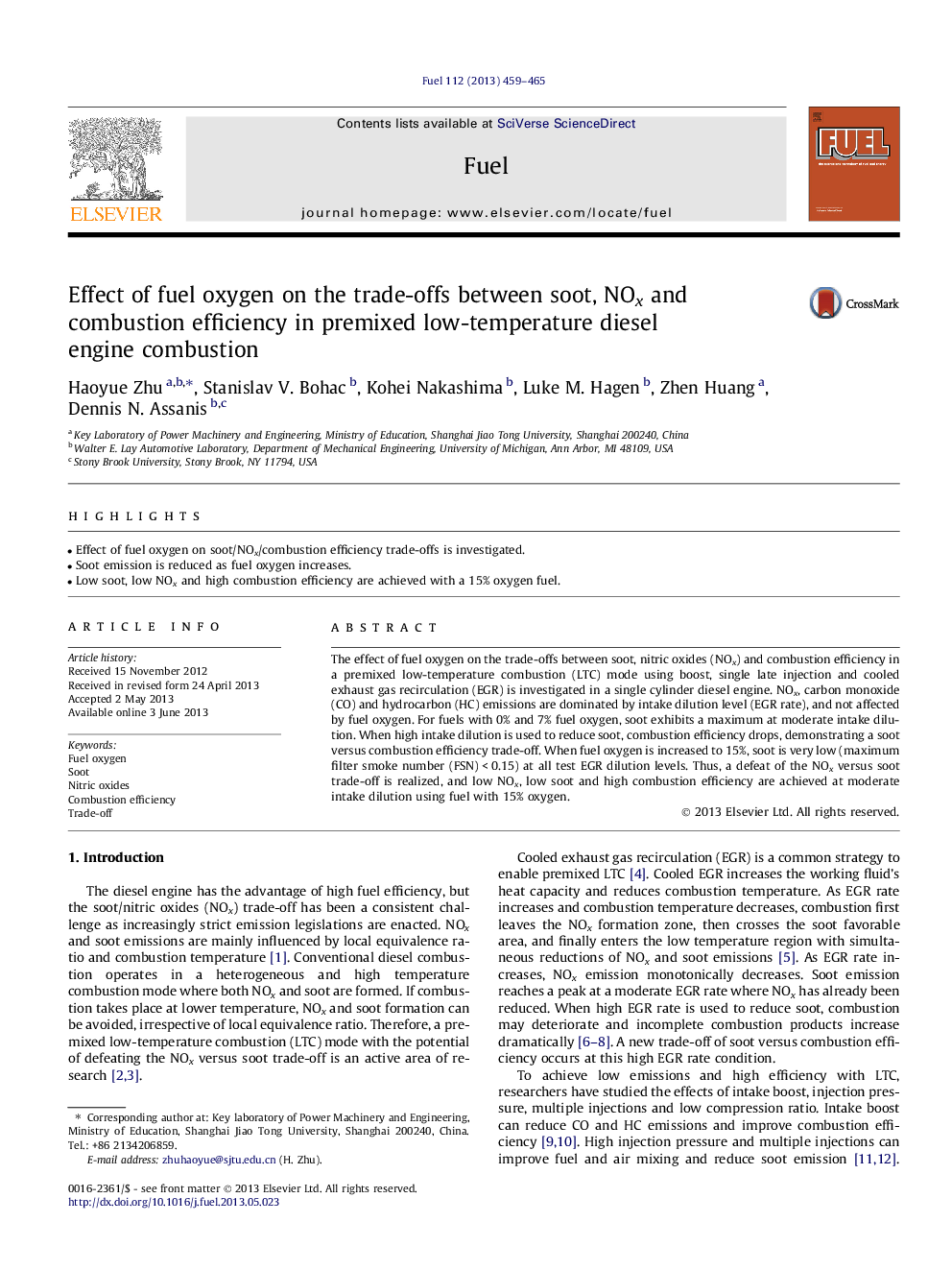| Article ID | Journal | Published Year | Pages | File Type |
|---|---|---|---|---|
| 6640280 | Fuel | 2013 | 7 Pages |
Abstract
The effect of fuel oxygen on the trade-offs between soot, nitric oxides (NOx) and combustion efficiency in a premixed low-temperature combustion (LTC) mode using boost, single late injection and cooled exhaust gas recirculation (EGR) is investigated in a single cylinder diesel engine. NOx, carbon monoxide (CO) and hydrocarbon (HC) emissions are dominated by intake dilution level (EGR rate), and not affected by fuel oxygen. For fuels with 0% and 7% fuel oxygen, soot exhibits a maximum at moderate intake dilution. When high intake dilution is used to reduce soot, combustion efficiency drops, demonstrating a soot versus combustion efficiency trade-off. When fuel oxygen is increased to 15%, soot is very low (maximum filter smoke number (FSN)Â <Â 0.15) at all test EGR dilution levels. Thus, a defeat of the NOx versus soot trade-off is realized, and low NOx, low soot and high combustion efficiency are achieved at moderate intake dilution using fuel with 15% oxygen.
Related Topics
Physical Sciences and Engineering
Chemical Engineering
Chemical Engineering (General)
Authors
Haoyue Zhu, Stanislav V. Bohac, Kohei Nakashima, Luke M. Hagen, Zhen Huang, Dennis N. Assanis,
